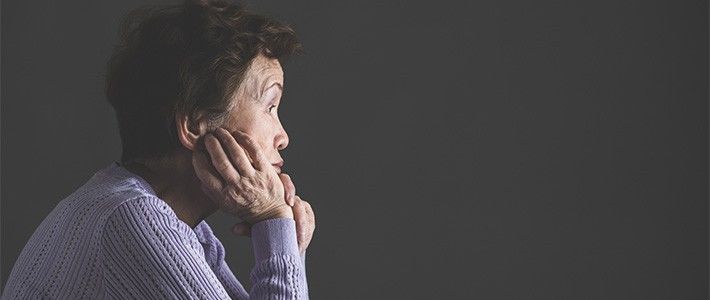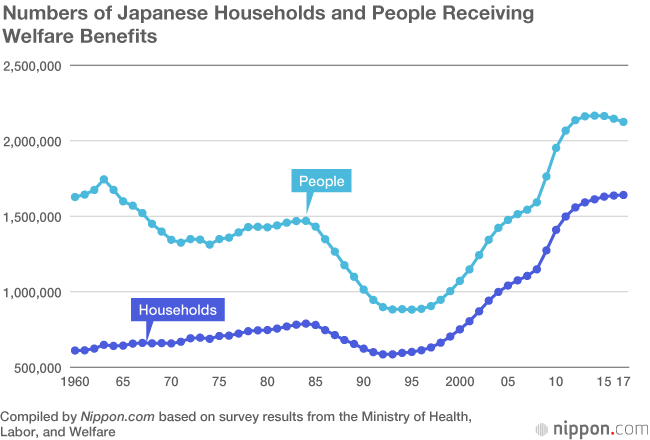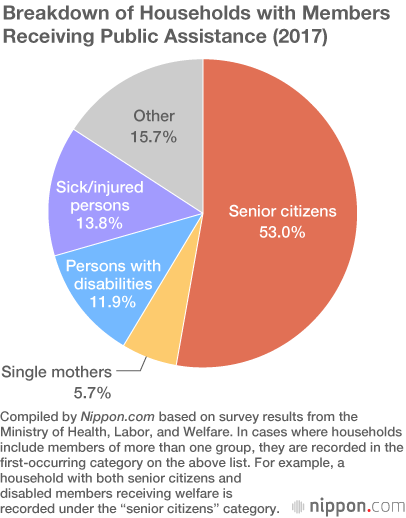
Increase in Senior Citizens Sees Record 1.64 Million Households on Welfare in 2017
Society- English
- 日本語
- 简体字
- 繁體字
- Français
- Español
- العربية
- Русский
Statistics from survey results released by the Ministry of Health, Labor, and Welfare on June 6 show that households receiving welfare benefits in 2017 (monthly average) rose by 0.2% to a new record high of 1,640,811. This figure has been rising continuously over the last 25 years and shows no signs of slowing.
In recent years, the costs related to public assistance have burdened national and local governments, stimulating discussion on how to curtail the budget. It has filtered into different sections of the news as a popular celebrity was forced to apologize for his mother claiming benefits, while a local authority was criticized for going too far when it created jackets with blunt slogans warning against cheating on welfare.

In 2017, the number of people receiving public assistance (monthly average) was 2,124,599 and although this number fell for the third year running, it still remains high. Historically, this level was also recorded at the start of the 1950s when Japan was still affected by postwar turmoil; however, from then it began to fall. After hitting its lowest level in 1995 with 880,000 people, the number has been rising again.
A breakdown of the figures for 2017 show that households with elderly members accounted for 864,709, or 53% of households receiving welfare, the highest so far on record. This is a clear indication that the number of impoverished senior citizens reliant on public assistance is continuing to increase. Single-mother households accounted for 5.7%, households with disabled members 11.9%, and those with sick or injured members 13.8%.
